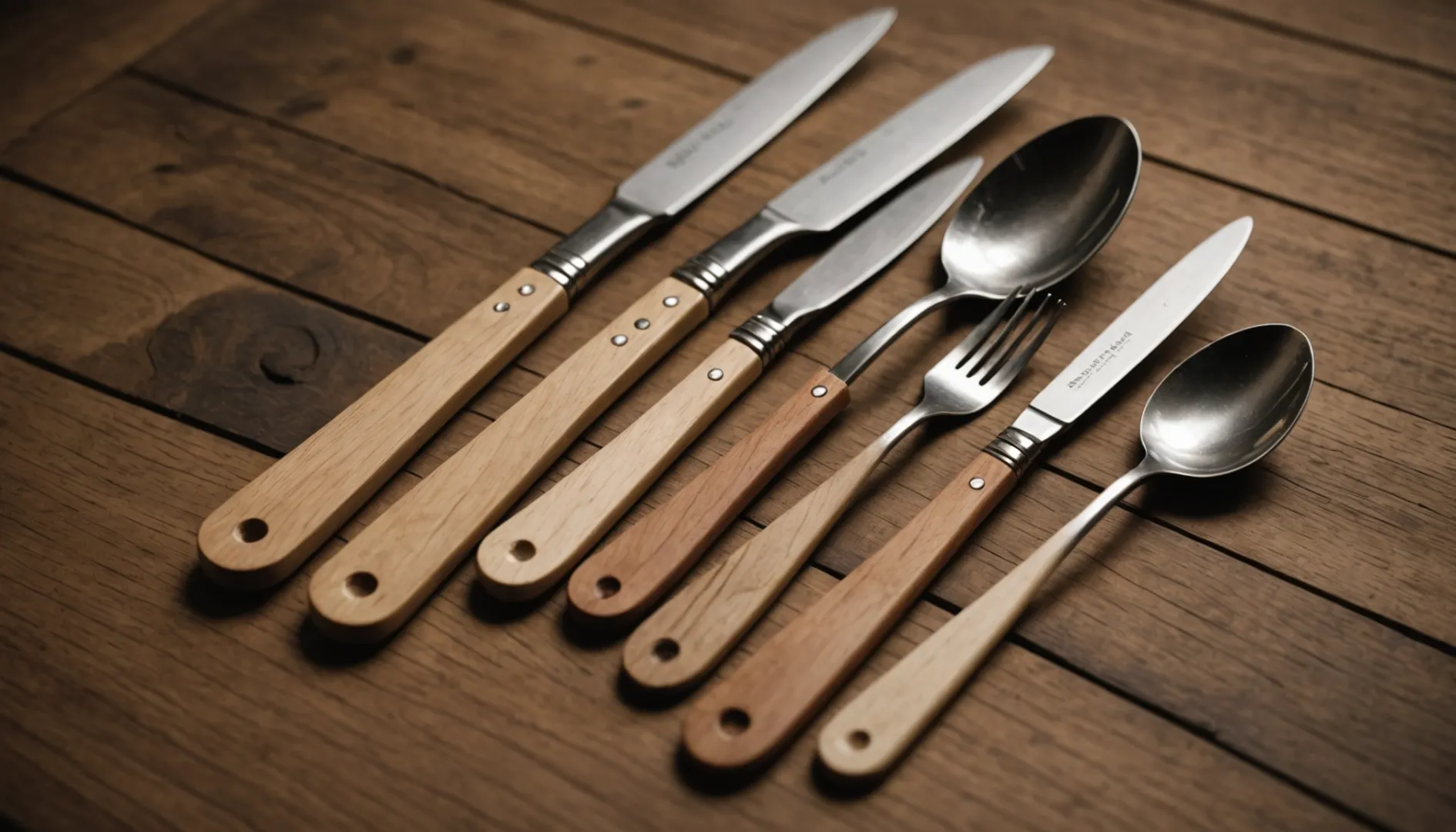
Choosing the right wood for your cutlery can significantly impact its performance and longevity.
Maple, oak, and linden are popular woods for cutlery due to their distinct properties. Maple offers durability and a smooth finish, oak is known for its strength and moisture resistance, while linden provides a lightweight option with a softer feel. Each type impacts the cutlery's durability, aesthetic, and maintenance differently.
While each wood type has its unique strengths, the choice depends on your specific needs and preferences. Whether you prioritize durability, ease of maintenance, or aesthetic appeal, the following sections will delve deeper into each wood's characteristics to help you make an informed decision.
Maple cutlery is more durable than oak.False
Oak is generally more durable due to its denser grain and strength.
What Are the Key Characteristics of Maple Cutlery?
Maple cutlery is celebrated for its durability and elegance, making it a top choice for eco-friendly dining solutions.
Maple cutlery is known for its robustness, fine grain, and smooth texture, offering durability and an attractive appearance. It's resistant to moisture and wear, making it ideal for frequent use. However, regular maintenance like oiling is essential to preserve its quality over time.
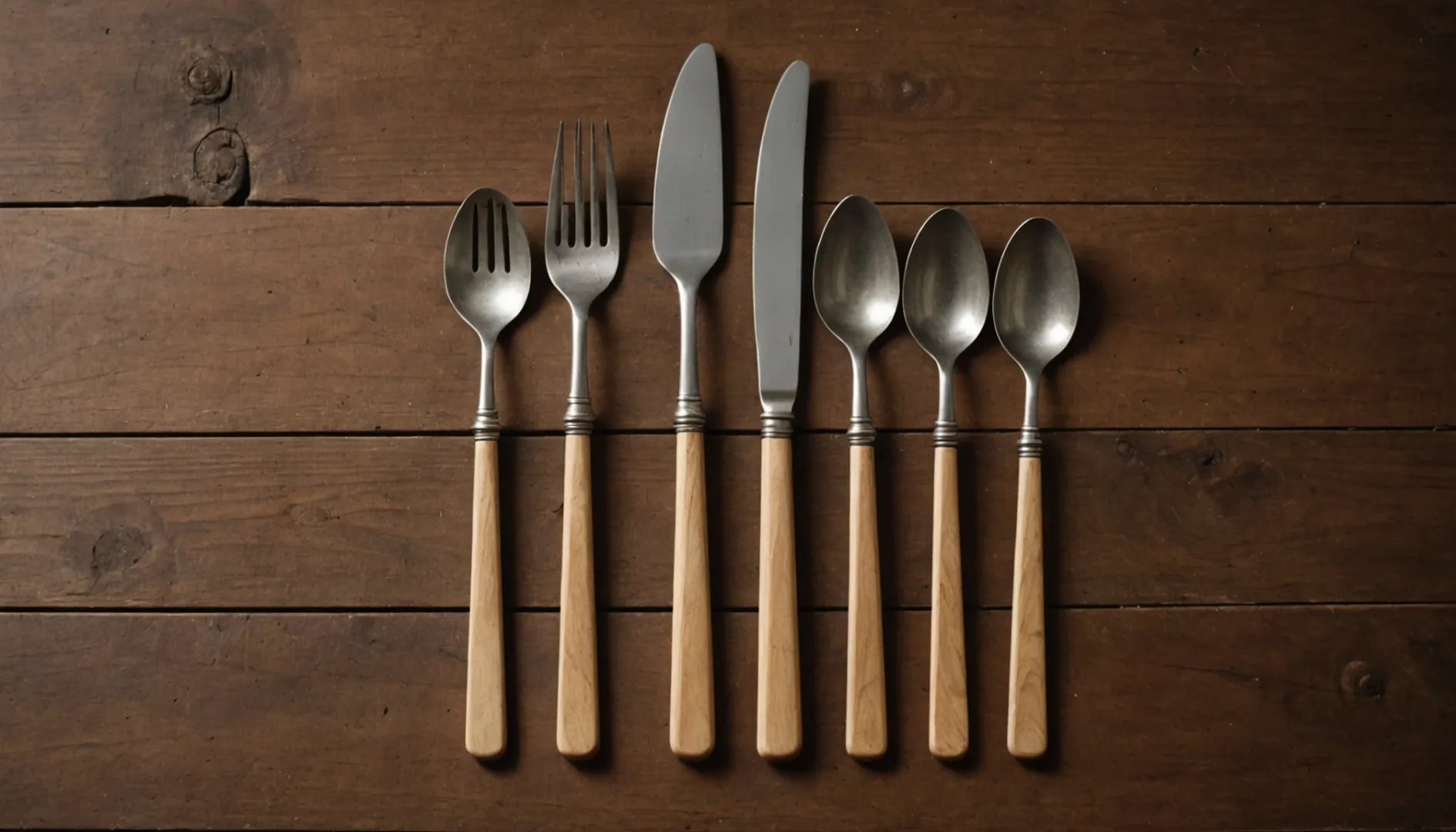
Durability and Strength of Maple Cutlery
One of the most compelling features of maple cutlery is its strength. As a hardwood, maple is inherently more durable than many other wood types, such as pine or linden. This makes it ideal for utensils that endure frequent use and washing. The close grain of maple not only enhances its sturdiness but also minimizes the risk of splintering, a common concern with lesser woods.
To maintain this durability, regular care is essential. Maple cutlery should be hand washed with mild soap and warm water, and promptly dried to prevent warping or cracking. Applying a food-safe oil occasionally helps keep the wood from drying out, maintaining both the utensil's structure and appearance.
Aesthetic Appeal of Maple
Maple wood is prized for its fine grain and smooth finish, which lend an elegant aesthetic to cutlery. This makes maple utensils a popular choice for those looking to add a touch of sophistication to their dining experience. The natural hues of maple range from creamy white to light brown, which can complement various table settings.
Moreover, the ability to polish maple to a high sheen enhances its visual appeal, making it suitable for both casual and formal dining situations. Many artisans choose maple for its aesthetic versatility, allowing them to create pieces that are both functional and artistic.
Maintenance and Care
Proper maintenance of maple cutlery is vital to prolong its lifespan and functionality. Unlike plastic or metal utensils, wooden cutlery requires specific care routines. Avoid soaking maple utensils in water or placing them in dishwashers, as excessive moisture can damage the wood.
An occasional rub with mineral oil or beeswax will help to maintain the wood's integrity and shine. This routine not only protects against moisture but also brings out the natural beauty of the grain. To avoid bacterial growth, ensure that the cutlery is thoroughly dried before storage.
Environmental Considerations
Maple cutlery stands out as an environmentally friendly alternative to plastic or metal options. Its biodegradability means that it won't contribute to landfill waste once its lifecycle ends. Moreover, when sourced responsibly from managed forests, it supports sustainable practices in manufacturing.
Consumers interested in eco-friendly dining solutions often prefer maple due to its renewable nature and minimal environmental impact. It's essential to look for certifications such as FSC certification1 that guarantee responsible sourcing.
Popular Uses and Settings
Thanks to its combination of durability and beauty, maple cutlery is versatile enough for various settings—from everyday meals at home to special occasions. Its strength ensures reliability even during rigorous use, while its refined look makes it a favorite for events where presentation is key.
In culinary environments, chefs often favor maple utensils for their ability to withstand frequent use without compromising on style or performance.
Maple cutlery requires regular oiling to maintain quality.True
Oiling prevents drying and preserves the structure and appearance.
Maple is less durable than pine for cutlery use.False
Maple is a hardwood, making it more durable than pine.
Why Choose Oak for Your Kitchen Utensils?
Oak is a top choice for kitchen utensils due to its natural strength, durability, and aesthetic appeal. It's not only functional but also adds a touch of elegance to your kitchen setup.
Oak kitchen utensils are favored for their durability, resistance to moisture, and classic appearance. Oak's dense grain makes it less porous, reducing bacterial growth and enhancing its longevity compared to softer woods.
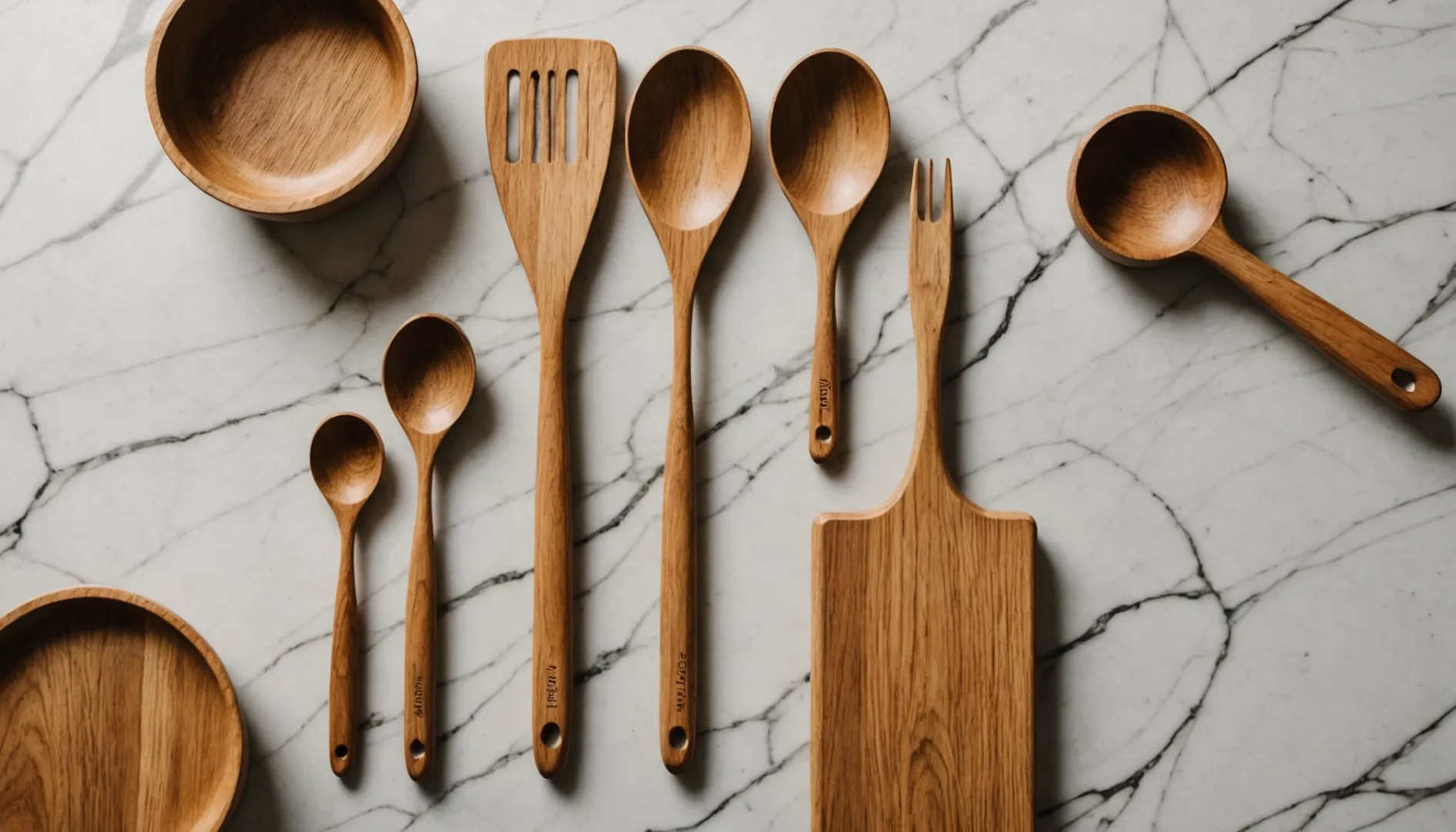
The Strength and Durability of Oak
One of the primary reasons oak is preferred for kitchen utensils is its exceptional strength. Oak is a hardwood with a dense grain structure, making it highly resistant to wear and tear. This characteristic ensures that your utensils can withstand frequent use and maintain their shape over time.
In terms of durability, oak's robust nature means it is less likely to crack or splinter. This makes oak utensils safer for everyday use, as they are less prone to breaking or developing rough edges that could harbor bacteria or cause injury.
Moisture Resistance
Another advantage of oak is its natural resistance to moisture. Unlike more porous woods, oak's tight grain reduces the risk of water absorption. This quality is particularly beneficial in a kitchen environment where utensils are often exposed to liquids.
The reduced moisture absorption not only helps prevent the growth of bacteria but also minimizes the risk of warping and swelling. With proper care, such as regular oiling, oak utensils can remain in excellent condition for many years.
Aesthetic Appeal and Versatility
Oak's aesthetic appeal is undeniable. Its rich, warm tones add a touch of sophistication to any kitchen. Oak utensils have a classic look that complements both modern and traditional kitchen designs.
Additionally, oak is highly versatile and can be shaped into various utensil types, from spatulas and spoons to cutting boards and salad tongs. This versatility allows you to create a cohesive kitchen aesthetic using a single type of wood.
Environmental Considerations
When choosing oak for your kitchen utensils, consider the environmental impact. Ensure that the oak is sourced from responsibly managed forests. Eco-certifications2 such as FSC (Forest Stewardship Council) can guarantee that the wood is harvested sustainably, contributing to environmental conservation efforts.
Overall, oak's combination of strength, moisture resistance, and aesthetic versatility makes it an excellent choice for kitchen utensils. By selecting high-quality oak products and maintaining them properly, you can enjoy long-lasting, beautiful kitchen tools that enhance both functionality and style.
Oak utensils are less porous than softer woods.True
Oak's dense grain structure makes it less porous, reducing bacterial growth.
Oak utensils are prone to warping and swelling.False
Oak's tight grain reduces moisture absorption, minimizing warping and swelling.
How Does Linden Compare to Other Woods in Cutlery Making?
Linden wood, known for its lightness and softness, offers unique advantages in cutlery making. However, how does it measure up against other woods like maple and oak?
Linden is lightweight, making it easy to handle, but less durable than hardwoods like maple and oak. It offers a softer feel and is cost-effective, ideal for disposable or decorative cutlery.
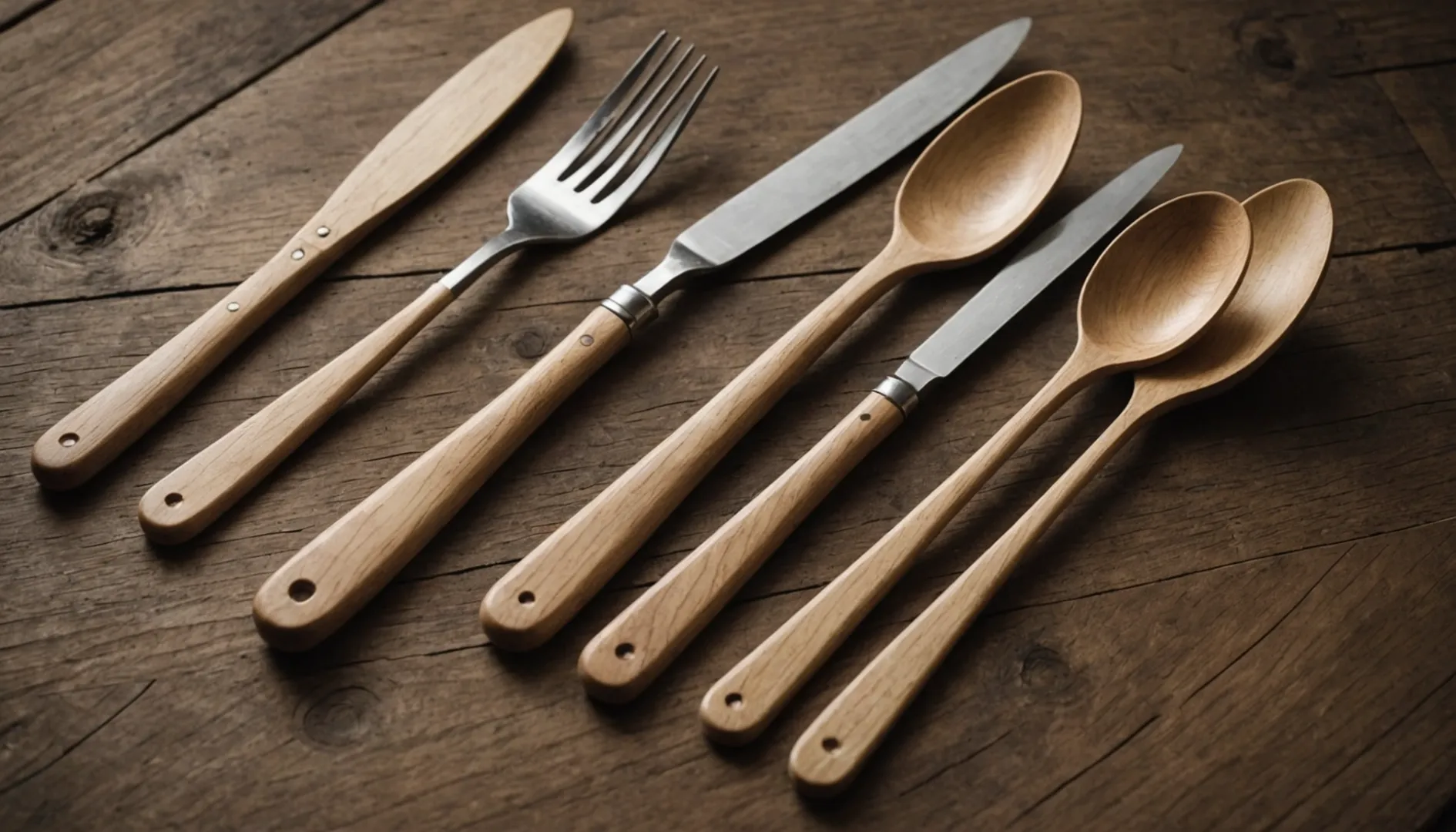
Understanding Linden Wood's Properties
Linden wood, also known as basswood, is often celebrated for its light weight and soft texture. These characteristics make it particularly appealing for crafting cutlery that prioritizes ease of use and affordability. While it doesn't match the density or durability of hardwoods like maple or oak, its pliability makes it easier to shape and carve, allowing for more intricate designs.
Advantages of Linden Wood:
- Lightweight: Linden cutlery3 is often preferred in settings where ease of handling is important, such as picnics or casual dining.
- Cost-Effective: Due to its availability and ease of processing, linden wood is generally more affordable than denser woods.
- Aesthetic Appeal: The fine grain and pale color of linden offer a clean, natural look suitable for decorative pieces.
Comparing Linden with Maple and Oak
When comparing linden to maple and oak, several key differences emerge, especially in terms of durability and moisture resistance. Maple and oak are renowned for their hardness and strength, making them ideal for more durable kitchen utensils that can withstand frequent use.
| Property | Linden | Maple | Oak |
|---|---|---|---|
| Density | Low | High | High |
| Durability | Moderate | Excellent | Excellent |
| Moisture Resistance | Moderate | High | High |
| Cost | Low | Moderate | High |
Suitability for Different Uses
Disposable vs. Reusable Cutlery:
Linden wood is particularly suited for disposable cutlery due to its cost-effectiveness and ease of production. However, for long-term use, the enhanced durability of maple or oak makes them superior choices.
Decorative Uses:
The soft nature of linden allows for detailed carvings and ornate designs, making it an excellent choice for decorative utensils or art pieces that do not require heavy usage.
Care and Maintenance Considerations
While linden cutlery may not require the same level of maintenance as maple or oak due to its intended use as disposable or decorative, understanding basic care can extend its usability. Avoid prolonged exposure to moisture to prevent warping and consider using a food-safe oil to enhance its lifespan and appearance.
The choice between these woods depends largely on intended use—whether prioritizing affordability and aesthetics with linden or opting for the durability and resilience of hardwoods.
Linden wood is more durable than oak for cutlery.False
Linden is less durable than oak, which is known for its hardness.
Linden wood is ideal for disposable cutlery due to its cost.True
Linden's affordability and ease of processing make it suitable for disposable use.
What Maintenance Tips Enhance the Longevity of Wooden Cutlery?
Wooden cutlery, while eco-friendly, requires special care to maintain its longevity and hygiene. Discover essential maintenance tips to keep your utensils in top condition.
To enhance the longevity of wooden cutlery, regularly apply food-safe oil, hand wash with mild soap, and avoid prolonged exposure to water and heat. Proper drying and storage also prevent warping and bacterial growth, ensuring your cutlery remains durable and hygienic.
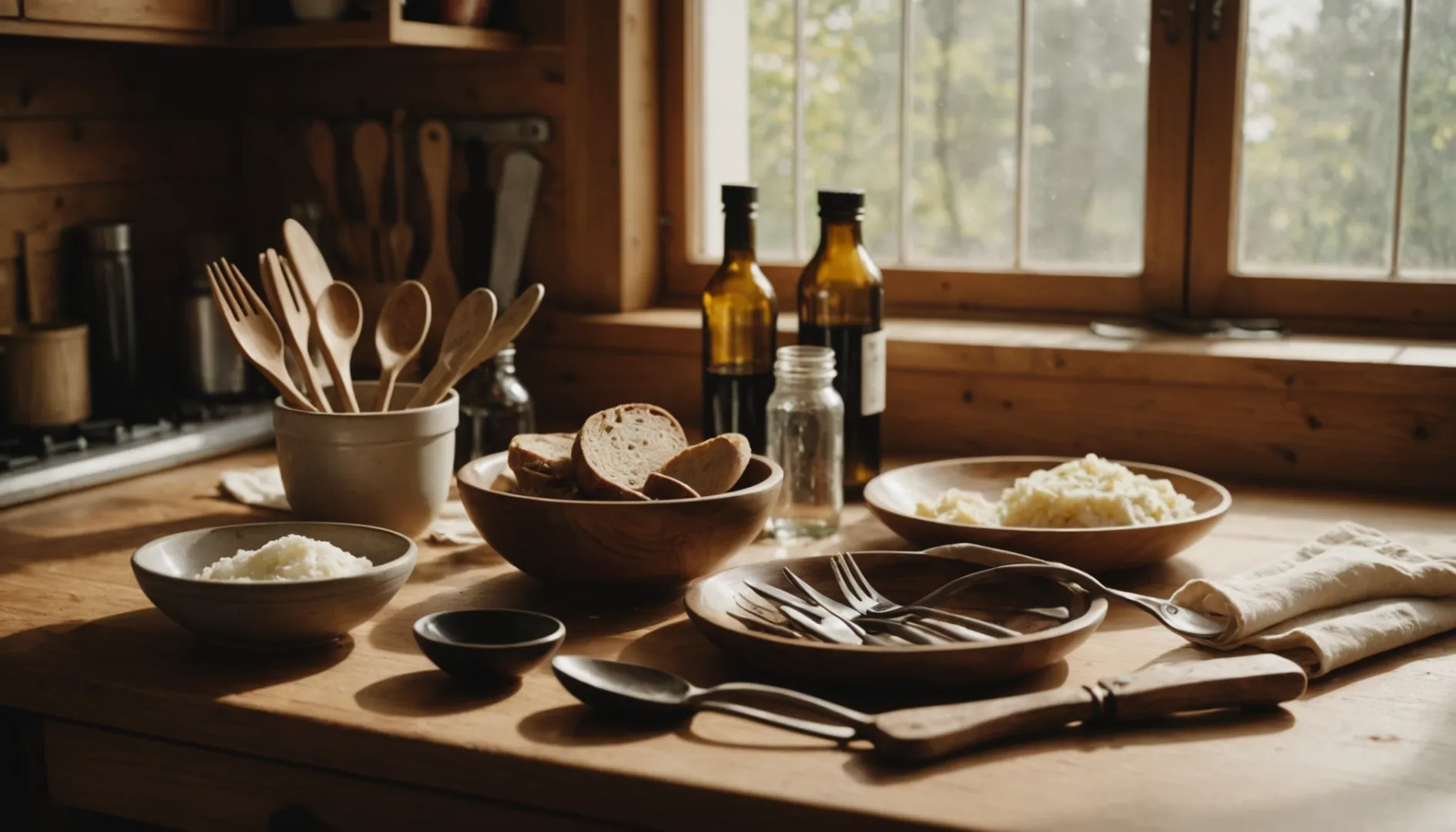
Regular Oiling and Conditioning
One of the most effective ways to extend the life of wooden cutlery is through regular oiling. Applying food-safe oils like mineral oil or beeswax4 creates a protective barrier against moisture and prevents the wood from drying out or cracking. Recondition your utensils every month or after heavy use to maintain their sheen and durability.
Tip: Before applying oil, ensure the cutlery is thoroughly clean and dry. Use a soft cloth to evenly distribute the oil across the surface.
Proper Cleaning Techniques
Wooden cutlery should always be hand washed with mild soap and warm water. Avoid soaking them in water for extended periods as this can lead to swelling or cracking. After washing, dry them immediately with a towel to prevent moisture absorption.
Tip: For stubborn stains or odors, use a paste made from baking soda and water. Gently scrub the utensil and rinse thoroughly.
Appropriate Storage Solutions
Store your wooden cutlery in a dry, cool place to prevent exposure to high humidity or heat. Consider using a drawer organizer or a dedicated holder to keep utensils separated and minimize scratches or dents.
Avoiding High Heat
Wood is sensitive to extreme temperatures. Avoid using wooden cutlery with hot foods like soups or directly on stove surfaces. High heat can dry out the wood, leading to cracks or warping.
Tip: If you need to use wooden utensils with hot items, ensure they are well-oiled and monitor their condition regularly.
Inspecting for Damage
Regularly inspect your wooden cutlery for signs of wear such as splinters, cracks, or discoloration. Address any issues immediately by sanding down rough edges or reapplying oil as needed.
These maintenance practices not only extend the life of your utensils but also keep them hygienic, making them a reliable choice for eco-conscious consumers. For more insights on maintaining sustainable products, check out our guide on sustainable kitchen practices5.
Wooden cutlery should be hand washed with mild soap.True
Hand washing with mild soap preserves the wood's integrity and hygiene.
High heat can cause wooden cutlery to warp or crack.True
Exposure to high temperatures dries out wood, leading to damage.
Conclusion
Understanding the properties of maple, oak, and linden helps in selecting the ideal wood for cutlery that suits your needs. Prioritize sustainability and care for long-lasting performance. Choose wisely to enhance your culinary experience.
-
Ensures sustainable sourcing of wooden materials.: FSC certification ensures that products come from responsibly managed forests that provide environmental, social and economic benefits. ↩
-
Understand eco-certifications to ensure sustainable sourcing of wood products.: The “Recycled” certification means the product has a minimum of 85% of the wood fiber content coming from post-consumer sources. The remaining ... ↩
-
Explore why linden is chosen for lightweight, decorative cutlery.: The biggest upside of using wood to replace plastic cutlery is that it's a natural, renewable material. This means no fossil-based ingredients are needed to ... ↩
-
Learn how beeswax offers protection and enhances wood durability.: The beeswax has the dual benefit of both sealing the pores and keeping the oil inside the wood, as well as acting as a natural antibacterial agent, preventing ... ↩
-
Discover eco-friendly practices that enhance kitchen sustainability.: 1. Use Eco-friendly Cleaning Products · 2. Ditch The Plastic · 3. Invest in long-lasting, high-quality cookware · 4. Energy-efficient appliances · 5 ... ↩

